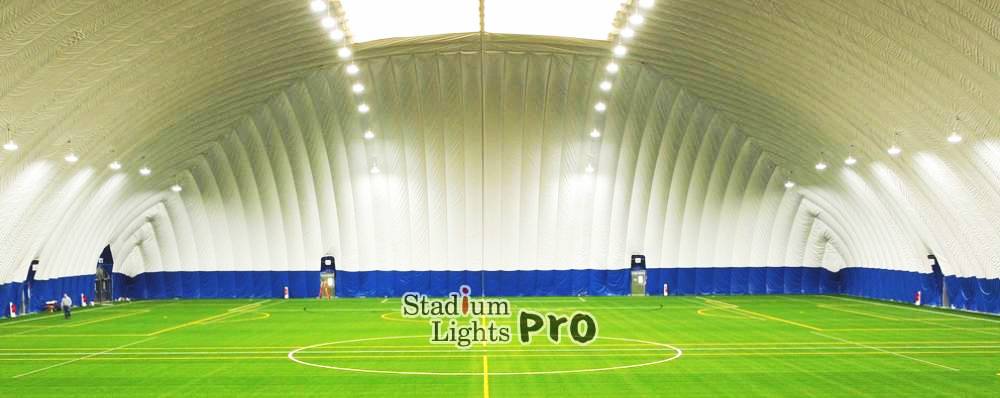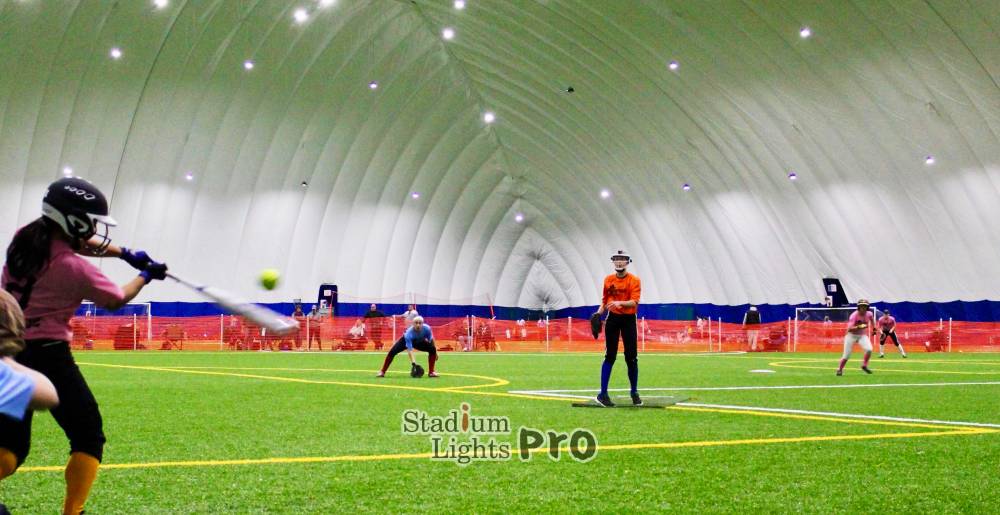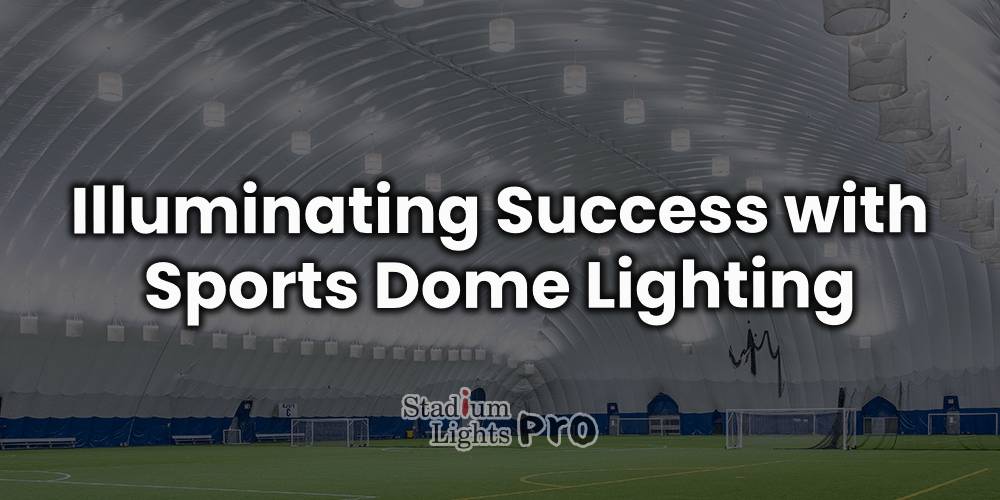The world of sports has evolved tremendously, with athletes pushing boundaries and facilities adapting to meet modern demands. Among these advancements, lighting systems in sports venues have emerged as a fundamental element that enhances both performance and viewer experience. Sports dome lighting installation plays a pivotal role in transforming indoor sports facilities into vibrant arenas capable of hosting a variety of events. Proper lighting not only ensures visibility but also influences the overall atmosphere, making it a significant aspect of facility management and design.
Table of Contents
ToggleKey Considerations for Sports Dome Lighting Installation
Planning and Design
Effective lighting installation for sports domes begins with comprehensive planning and design tailored to the facility’s specific needs. Facility managers must assess various factors, including the types of sports played, the dimensions of the dome, and the intended audience. For example, a dome that hosts high-intensity sports like basketball or soccer requires a different lighting setup compared to one used primarily for recreational activities.
Collaborating with lighting designers and engineers is essential in crafting a bespoke lighting plan that addresses these unique requirements. This collaboration involves discussing aspects such as brightness levels, light distribution, and the technological capabilities of the lighting fixtures. Engaging stakeholders in the planning phase can also help in identifying potential challenges and opportunities that may arise during installation.
Compliance with Regulations
Adhering to local regulations and industry standards is paramount throughout the installation process. Organizations such as the Illuminating Engineering Society (IES) provide guidelines that specify lighting levels, uniformity, and other critical parameters for sports facilities. Ensuring compliance with these standards not only enhances safety and functionality but also provides reassurance to stakeholders, including athletes, spectators, and facility owners.
In addition to IES guidelines, it’s important to consider any local building codes and safety regulations that may apply. Consulting with local authorities or building inspectors during the planning and installation phases can help ensure that all requirements are met, thereby minimizing the risk of legal liabilities and safety hazards.
Installation Process
The installation of lighting in sports domes requires a systematic and organized approach to ensure optimal results. The initial steps include conducting thorough site assessments, selecting appropriate lighting fixtures, and developing a comprehensive installation timeline. It’s crucial to hire experienced professionals who are adept at handling the complexities associated with advanced lighting systems.

Preparing the Site
Preparation is the foundation of a successful installation. This phase involves coordinating with other contractors, ensuring that all necessary equipment and materials are available on-site, and developing a detailed project timeline to minimize disruptions. Safety is a primary concern during this stage, particularly when working at heights or dealing with electrical systems. Adequate planning can help streamline the process and ensure that safety protocols are strictly followed.
Installing Fixtures
The installation of fixtures involves securely mounting lights in designated locations, ensuring that they are positioned at the proper height and angle to achieve the intended light distribution. Precision in this step is vital, as it can significantly influence the performance of the lighting system and reduce the need for future adjustments.
Wiring and Testing the System
Once all fixtures are installed, the next step is wiring, which must adhere to all relevant electrical codes and regulations to ensure safety and functionality. Following the completion of wiring, the entire system undergoes rigorous testing to verify that all fixtures operate correctly and deliver the desired illumination levels. This testing phase may involve adjusting angles and calibrating controls to fine-tune the lighting layout, ensuring that it meets the specific needs of the facility.
Designing the Lighting System
The design phase is critical for ensuring the lighting system aligns with the requirements of the sports dome. A well-crafted lighting plan addresses specific activities and spaces within the dome, factoring in brightness levels, light distribution uniformity, glare reduction, and energy consumption.
Conducting Photometric Analysis
A photometric analysis is an invaluable tool during the design process. This analysis utilizes computer simulations to predict how light will be distributed across the playing surface, allowing designers to evaluate various lighting configurations. By assessing different layouts, designers can optimize fixture placement to minimize shadows and enhance visibility while identifying potential glare issues that could affect athletes and spectators alike.
Collaborating with Experts
Engaging with lighting designers and electrical engineers throughout the design phase is crucial for adhering to best practices and meeting relevant standards. These professionals can offer insights into the latest lighting technologies, control systems, and energy efficiency strategies, ultimately leading to a more effective lighting solution tailored to the unique needs of the sports dome.
Creating a Scalable Design
When designing the lighting system, considering scalability is essential for accommodating future needs. As the usage of the sports dome evolves—whether by hosting new sports, events, or activities—a scalable design allows for easy upgrades and modifications, ensuring that the lighting system remains relevant and functional over time.
Testing and Adjustment
After installation, rigorous testing and adjustment of the lighting system are necessary to ensure optimal performance. This phase involves evaluating light levels, adjusting angles, and calibrating controls to achieve the desired lighting effects. Conducting thorough testing is critical to ensuring that the lighting system meets performance expectations and enhances the overall experience for athletes and spectators alike.
Maintenance of Lighting Systems
Maintaining the lighting system is vital for its longevity and optimal performance. Regular maintenance activities include inspecting fixtures for damage, cleaning lenses to remove dust and debris, and checking electrical connections. A well-maintained lighting system operates efficiently, providing consistent illumination and minimizing the risk of unexpected failures.
Establishing a Maintenance Schedule
Creating a detailed maintenance schedule helps ensure regular inspections and timely addressing of any issues that arise. This schedule should outline specific tasks such as bulb replacements, corrosion checks, and overall condition assessments of the fixtures. Keeping meticulous records of maintenance activities can facilitate the identification of recurring problems and areas needing attention.
Training Staff
Training facility staff on basic maintenance practices empowers them to handle minor issues and perform routine inspections. Providing clear guidelines and resources helps ensure that maintenance tasks are completed accurately and on time. A well-trained staff contributes significantly to the efficiency and effectiveness of the lighting system, allowing for quicker identification and resolution of issues.
Engaging Professional Services
For more complex maintenance needs, it may be necessary to engage professional services. Qualified technicians can conduct thorough inspections, perform repairs, and offer expert advice on potential upgrades or modifications to the lighting system. Building a relationship with a reliable service provider can enhance the longevity and performance of the lighting solution.
Safety and Compliance
Safety remains a top priority in any sports facility, and the lighting system plays a significant role in fostering a safe environment. Adequate lighting is essential for preventing accidents by improving visibility throughout the dome, including walkways, seating areas, and emergency exits.
Addressing Emergency Lighting Needs

In addition to standard lighting, provisions for emergency lighting are essential to ensure safety during power outages or emergencies. Emergency lights should be strategically positioned to illuminate key areas such as exits and pathways, guiding occupants safely out of the building. Regular testing of emergency lighting systems is crucial to ensure their functionality when needed.
Meeting Local Regulations
Compliance with local building codes and safety regulations is essential in the design and installation of lighting systems. Understanding and adhering to these regulations not only ensures user safety but also minimizes legal liabilities. Engaging with local authorities or building inspectors during the planning and installation processes can help ensure that all requirements are met, fostering a safer environment for all users.
Conducting Safety Inspections
Routine safety inspections of the lighting system are necessary to identify potential hazards and ensure compliance with regulations. These inspections should assess the condition of fixtures, wiring, and emergency systems, confirming that all components function as intended. Promptly addressing any issues identified during inspections can prevent accidents and enhance the overall safety of the facility.
Economic Impact of Lighting Upgrades
Investing in a modern lighting system can have significant economic implications for sports domes. Enhanced lighting not only attracts more events and increases usage rates but also enhances the overall value of the facility. High-quality lighting creates the potential for hosting a wider variety of activities, including tournaments, competitions, and community events.
Increased Revenue Opportunities
Improved lighting can create a more inviting environment for athletes and spectators alike, potentially leading to increased ticket sales and concession revenues. Facilities prioritizing high-quality lighting solutions may find themselves in higher demand for events, resulting in a substantial boost in overall revenue.
Long-Term Cost Savings
While the initial investment in a modern lighting system may seem substantial, the long-term cost savings associated with energy-efficient solutions often outweigh these upfront costs. Facilities can experience reduced utility bills and lower maintenance expenses, leading to a positive return on investment over time. Moreover, investing in energy-efficient lighting can also enhance the facility’s sustainability profile, aligning with broader community goals for environmental responsibility.
Building Community Support
As communities recognize the value of upgraded facilities, support for such initiatives often grows. Engaging with local stakeholders, including schools, sports organizations, and community groups, can foster partnerships that enhance funding opportunities and increase the visibility of the sports dome within the community. By highlighting the benefits of enhanced lighting for athletes, families, and local organizations, facility managers can build a strong case for investment in lighting upgrades.
Challenges and Solutions

Budget Constraints
One of the most common challenges faced during sports dome lighting installation is budget constraints. The upfront costs associated with upgrading to modern lighting systems can be substantial, deterring some facilities from making the switch. However, facility managers can mitigate this challenge by conducting thorough cost-benefit analyses that illustrate the long-term savings associated with energy-efficient lighting solutions.
Exploring financing options, such as energy efficiency grants or partnerships with local utility companies, can also provide financial support for lighting upgrades. By presenting a compelling case for the long-term benefits of modern lighting, facility managers can overcome budgetary obstacles and secure the necessary funding for their projects.
Technical Expertise
Finding qualified professionals with experience in sports lighting installations can be a hurdle for some facilities. The complexity of modern lighting systems requires specialized knowledge that may not be readily available in all regions. To address this challenge, facility managers can build relationships with reputable lighting manufacturers and consultants who can provide guidance throughout the installation process.
Engaging in training programs for existing staff can also help develop the necessary expertise within the organization. Investing in education not only enhances the facility’s capabilities but also fosters a culture of continuous improvement and adaptability.
Maintenance Management
Once a lighting system is installed, ongoing maintenance becomes a critical concern. Facilities must establish regular maintenance schedules to ensure that the system remains operational and efficient. Failure to perform routine checks can lead to unexpected outages and increased energy costs, which could negatively impact the facility’s operational budget.
Investing in a reliable maintenance plan is essential for maximizing the lifespan of the lighting system. Training facility staff on maintenance procedures and creating detailed checklists can empower them to proactively identify and address issues before they escalate. This proactive approach can enhance overall system reliability and performance, ensuring that the facility remains a safe and inviting environment for all users.
Conclusion
Lighting installation in sports domes requires a comprehensive approach that encompasses careful planning, adherence to regulations, and a commitment to ongoing maintenance. By prioritizing these considerations, facility managers can create a safe, functional, and economically viable environment that meets the needs of athletes and spectators alike. Investing in high-quality lighting not only enhances the user experience but also positions the facility as a community asset, fostering greater engagement and utilization.

